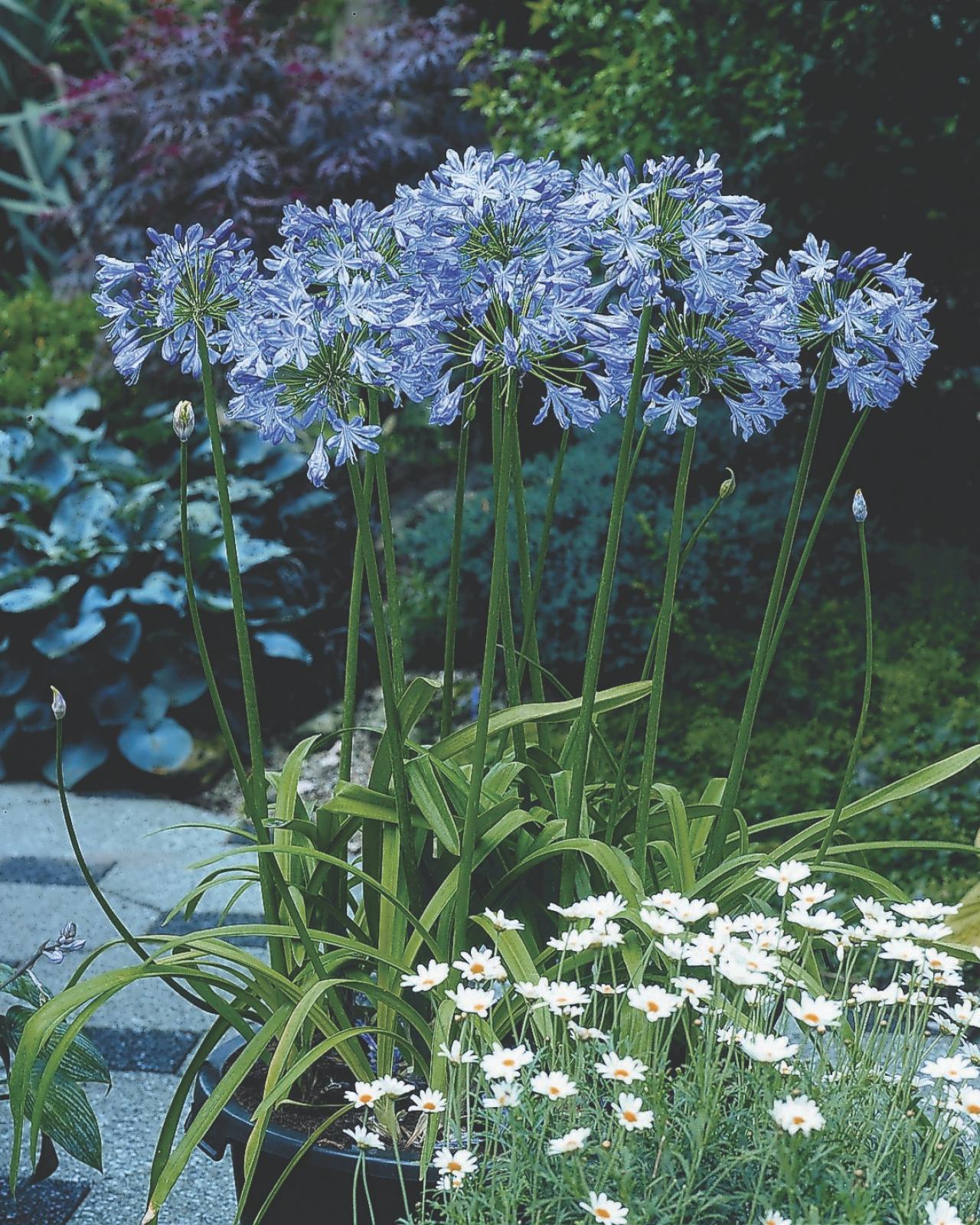Magnificent Agapanthus: Enhancing Your Yard's Elegance
Magnificent Agapanthus: Enhancing Your Yard's Elegance
Blog Article
Mastering the Art of Agapanthus Care: Necessary Actions for Healthy Development and Vivid Flowers
In the world of gardening, the farming of agapanthus stands as a rewarding venture for those that look for to nurture these elegant blooming plants. With their striking flowers and stylish foliage, agapanthus has actually caught the focus of garden enthusiasts worldwide. Nonetheless, accomplishing ideal development and dynamic blooms needs a nuanced strategy that incorporates different important steps. From picking the right selection to understanding pruning techniques, the trip towards cultivating flourishing agapanthus plants is complex and holds the crucial to unlocking the full possibility of these botanical treasures.

Selecting the Right Agapanthus Range

When choosing the ideal Agapanthus range for your yard, take into consideration variables such as climate suitability, blossom shade, and growth behavior. Furthermore, think about the environment in your area to ensure the Agapanthus selection you select can prosper in your details problems. Recognizing the development habit of various Agapanthus selections is crucial for proper placement within your yard.
Perfect Planting Problems
Considering the optimum ecological requirements is vital for effective Agapanthus cultivation. Agapanthus thrives in well-draining dirt with a somewhat acidic to neutral pH level. When planting, choose an area that gets full sunlight to partial color. In hotter environments, providing some afternoon shade can stop scorching of the fallen leaves. Agapanthus plants are sensitive to cold temperatures and should be protected from frost during wintertime months.
To guarantee healthy and balanced growth and dynamic blooms, plant Agapanthus bulbs at a depth of concerning 2-4 inches and space them 8-12 inches apart. Adding natural issue, such as garden compost, to the soil can boost drainage and fertility, promoting durable root development. Mulching around the base of the plants aids keep wetness and suppresses weed growth. Routine watering is crucial, especially during the growing period, to keep the soil consistently moist yet not saturated.
Watering and Fertilizing Tips
Keeping correct dampness degrees and offering important nutrients are key elements in the treatment regimen for Agapanthus plants. When it comes to sprinkling Agapanthus, it is essential to strike a balance. These plants favor consistently wet soil but are susceptible to root rot if overwatered.
Fertilizing Agapanthus is essential for promoting healthy growth and prolific blossoms. Apply a additional resources well balanced fertilizer, such as a 10-10-10 formula, in the very early spring as new growth emerges. Repeat this application every 6-8 weeks throughout the growing period. Prevent extreme fertilizing, as it can cause rich foliage at the expense of blossoms. Always follow the maker's directions for correct dilution and application approaches. By adhering to these watering and feeding tips, you can ensure your Agapanthus plants prosper and create dynamic, long-lasting blooms.
Trimming Techniques for Agapanthus
Pruning Agapanthus plants at the appropriate times and with appropriate techniques is crucial for preserving their health and wellness and promoting optimum development and blooming. The perfect time to prune Agapanthus is in late winter season or early springtime before new development arises.
For flowered stems, wait till the blossoms have perished and afterwards trim them back to have a peek at these guys the base. This not just cleans the plant's look however also urges the development of new flower buds. Deadheading spent blossoms can also redirect the plant's energy into creating even more flowers instead than establishing seeds. Nevertheless, if you intend to accumulate seeds for propagation, leave some blossoms to dry and fully grown on the plant.
Keep in mind to make use of tidy, sharp devices to make precise cuts and lower the threat of presenting conditions. Agapanthus. Regular pruning will certainly assist maintain your Agapanthus looking neat and healthy while making certain a bountiful screen of lovely flowers
Taking Care Of Typical Insects and Diseases
After making certain correct trimming strategies for Agapanthus, it is important to resolve typical bugs and conditions that can impact the health and wellness and vitality of these click to find out more plants. Agapanthus plants are generally durable however can still succumb specific problems. One usual bug that impacts Agapanthus is the Agapanthus gall midget. This small, orange fly lays its eggs in the vegetation, leading to altered development and blossom buds that fall short to open up. To combat this pest, prune and damage any affected plant parts and consider utilizing insecticidal soap.
Furthermore, Agapanthus plants can suffer from root rot if they are grown in poorly draining soil. By being attentive and taking timely activity versus parasites and diseases, you can help your Agapanthus plants flourish and generate dynamic blossoms. Agapanthus.

Conclusion
In final thought, understanding the art of agapanthus care includes choosing the right range, giving suitable growing problems, appropriate watering and feeding, proper pruning methods, and resolving common pests and conditions. By complying with these crucial actions, you can make certain healthy growth and lively flowers for your agapanthus plants. Bear in mind to regularly keep track of and maintain your plants to promote their total health and long life.
To ensure healthy growth and vivid blooms, plant Agapanthus light bulbs at a depth of concerning 2-4 inches and room them 8-12 inches apart. By following these watering and fertilizing tips, you can guarantee your Agapanthus plants prosper and produce dynamic, long-lasting flowers.
One typical pest that influences Agapanthus is the Agapanthus gall midge. In addition, Agapanthus plants can endure from root rot if they are grown in inadequately draining soil. By following these vital steps, you can guarantee healthy and balanced development and vibrant blooms for your agapanthus plants.
Report this page